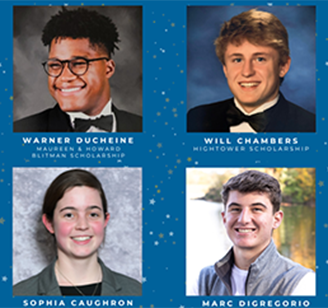July/August 2018
Communities: Education
‘Branches From the Same Tree’: Interdisciplinary Educational Approaches Growing
A broad and integrated education was once considered an important part of preparing students for life, work, and civic engagement. But over the years, higher education has become increasingly specialized. Some are asking if that trend has gone too far.
A growing number of programs are bringing together seemingly disparate areas of study—for example, in courses joining engineering with the arts or humanities—not to replace focused disciplines but to cultivate connections between them.
But what is the impact of such efforts? To answer this question, a committee convened by the National Academies of Sciences, Engineering, and Medicine examined the current state of knowledge on integrating the humanities and the arts with the sciences, engineering, and medicine.
The committee compiled a list of 218 integrated programs and courses in higher education. The members found that while controlled, randomized testing on potential benefits is hard to come by, “abundant” narrative and anecdotal evidence, as well as some evidence from research studies, is promising.
Committee member Youngmoo Kim, professor of electrical and computer engineering at Drexel University, says that while the evidence isn’t a “slam dunk,” the committee believes “there is a there there.”
Kim is the director of the Expressive and Creative Interaction Technologies (ExCITe) Center, which aims to “inspire trans-disciplinary research and discovery.” There, for instance, students can integrate electrical engineering with music, creating robot music videos or drone dance performances.
Kim believes collaborative, integrated approaches are both effective and “transformative.”
According to the committee, potential benefits of integrated education include improved communication and teamwork skills, critical thinking, ethical decision making, and content mastery, as well as the ability to apply knowledge to the real world, empathy, resilience, and overall engagement with and enjoyment of learning.
Integrated approaches also offer benefits for equity and inclusion, Kim emphasizes. Broadening areas of study enables more people to see themselves in a profession, he says. “Some aren’t seeing that there are real, creative, artistic possibilities through science and technology.”
At Olin College of Engineering, Robert Martello is associate dean for curriculum and academic programs and a professor of the history of science and technology. The committee member has cotaught four different courses integrating technical and humanities skills and content and has researched the benefits.
His study compared two project-based materials science courses. The non-integrated courses emphasized technical learning in a real-world context; the integrated course wove in a humanities and social science course in the history of technology.
Surveys and interviews of hundreds of students over several years confirmed statistically significant increases in intrinsic motivation and in the use of beneficial learning strategies such as peer learning in the integrated course, compared to the non-integrated one. In addition, the analysis found significant benefits for women in the integrated course, such as improvements in the use of critical thinking and higher self-efficacy.
There is a lot of interest in integrating courses, Martello says, but doing so can seem daunting, and educators lack resources and experience. Joining forces and sharing lessons learned can help.
“There’s a paradigm shift underway,” Martello stresses, “a change in the way of seeing the world.” That’s hopeful and exciting to him. Especially since the value of that change is becoming evident, with challenges that require a multidisciplinary response.
Says Martello, “We need politicians that understand the technical aspects of the laws they’re passing and also the ethical components. We need engineers who are not just brilliant in math and engineering concepts but wonderful communicators, because they need to get people educated about what they’re doing.”
While further research and evaluation are needed, the committee notes, integrated education approaches should continue to be supported and disseminated.
As David Skorton, secretary of the Smithsonian Institution and committee chair, put it: “Given that today’s challenges and opportunities are at once technical and human, responding to them calls for the full range of human knowledge and creativity.”
The Integration of the Humanities and Arts with Sciences, Engineering, and Medicine in Higher Education: Branches From the Same Tree is available at www.nap.edu. Click on the “Resources” tab for the compendium of programs and courses.


 Volunteering at NSPE is a great opportunity to grow your professional network and connect with other leaders in the field.
Volunteering at NSPE is a great opportunity to grow your professional network and connect with other leaders in the field. The National Society of Professional Engineers (NSPE) encourages you to explore the resources to cast your vote on election day:
The National Society of Professional Engineers (NSPE) encourages you to explore the resources to cast your vote on election day: A STUDENT IMAGE FROM OLIN COLLEGE OF ENGINEERING’S “THE INTERSECTION OF BIOLOGY, ART, AND TECHNOLOGY” COURSE EMBEDS GENETIC INFORMATION.
A STUDENT IMAGE FROM OLIN COLLEGE OF ENGINEERING’S “THE INTERSECTION OF BIOLOGY, ART, AND TECHNOLOGY” COURSE EMBEDS GENETIC INFORMATION.




